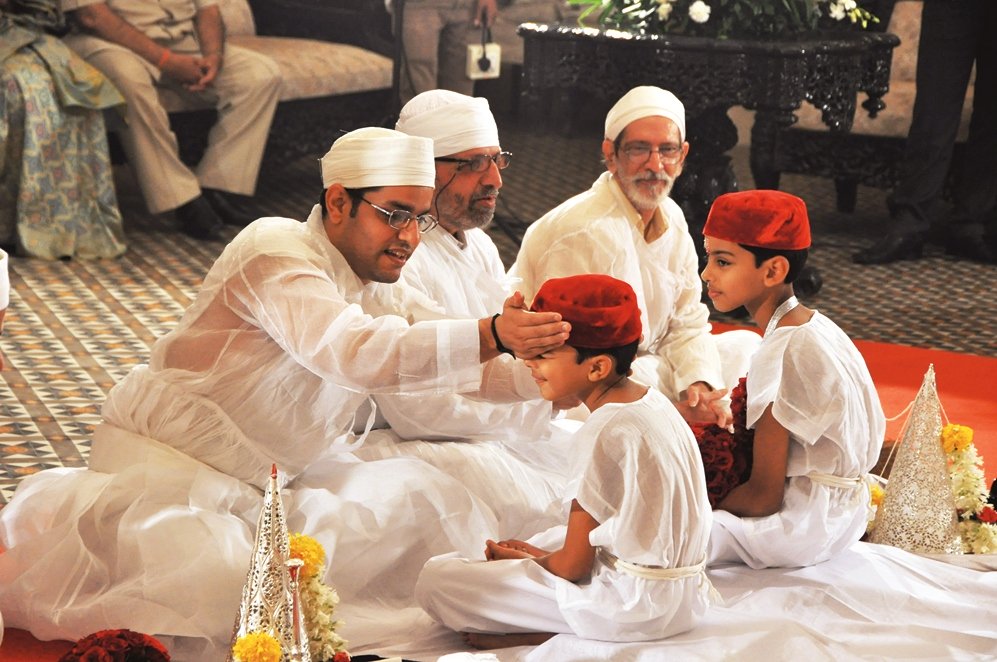
A number game?
The Jiyo Parsi campaign aims to shake Indian Parsis out of procreative somnolence
“Isn’t it time you broke up with your mom?” goes the tagline on an ad featuring a man with his aged mother. Another says, “Be responsible. Don’t use a condom tonight.” A third, featuring a woman in a ballerina pose asks, “Who will be snooty about being superior if you don’t have kids?” These provocative and cheeky ads published in Parsi publications, are part of the Indian government’s Jiyo Parsi programme — an attempt to shore up the shrinking numbers of the Indian Parsi community, which doesn’t seem to be doing much about its flatlining population. The last census data, which shows that their headcount dropped from 114,000 Parsis in 1941 to 69,000 Parsis in 2001, a fall of 39% on an already-small base, makes a compelling case for such an intervention.

A jashn at Banaji Atash Behram temple. PHOTO COURTESY: JASMINE DRIVER

Children at the Parsi colony Navroz Bagh, Mumbai. PHOTO COURTESY: JEHANGIR PATEL, PARSIANA
The idea was born when, after seven years of research in collaboration with leading Indian institutes, the National Commission of Minorities identified late or no marriage, decline in fertility and marriage outside the community as the main drivers behind this dwindling demographic. “The community has become, sad to say, demographically abnormal, and Jiyo Parsi is trying to address that,” says Dr Shernaz Cama, honorary director of the UNESCO-funded Parzor Project, which is implementing the scheme. “Parsis have a Total Fertility Rate (TFR) — the average number of children that would be born to a woman if she were to live to the end of her childbearing years and bear children according to age-specific fertility rates — of 0.88, while the community needs a TFR of 2.1 to survive. Only one in nine families has a child below the age of 10,” she adds.
The five-year programme is backed by a Rs10 crore government grant and has a two-pronged strategy — advocacy and medical assistance. The first includes promoting early marriage and multiple children. Under the second, free fertility treatments are offered to couples whose annual income is below Rs10 lakhs. The campaign has found eager takers, with over 20 couples availing treatments like In-Vitro Fertilization (IVF) and Intra-Uterine Insemination (IUI) over the last year.

A navjote ceremony in progress. PHOTO COURTESY: JEHANGIR PATEL, PARSIANA
Equally, the ad campaign has angered many Parsis, who find the ads regressive and sexist. Parizad Mehta, a Mumbai-based bank employee who has two daughters, says the campaign places the entire onus of procreation on women. “I welcome the initiative because something needs to be done about our numbers. But why should women carry the burden?” she says, adding that girls in their early 20s are still trying to find a direction in life and it is unfair to expect them to set their dreams and ambitions aside because the community needs numbers. “They are putting out the message that a woman’s life is not complete without marriage and motherhood, and that is appalling,” adds Simin Merchant, a doctoral student from the University of Oxford, whose research is focused on the Parsis of colonial India. According to Merchant, the campaign’s message to women and couples who marry late breeds paranoia, a contrast to the pioneering ideals of progressiveness and modernity that Parsis are known for.

Those behind the programme say rapid decline is a hard fact and it is time to get aggressive about addressing it. “The fact is that there is a thing called biology and the world over there is growing realisation of the need to impart a more traditional feminism,” says Dr Cama, adding that you cannot refute the fact that women age biologically at 25 and their eggs are not in the same condition as they were at the age of 22. “There is a need to get back to a healthy work-life balance. What is the harm in a girl getting married and later continuing her career? Learn from the mistakes we have made in the past,” she says.
Apart from the campaign, many within the community are questioning the very approach of the programme as it discriminates against Parsi women with non-Parsi spouses. For example, they cannot avail the medical benefits offered by the community, while Parsi men who have married outside the faith can. “How can the purpose of stemming the decline be achieved when Parsi women who have married outside the community and their children are not considered Parsi (whereas the same measure is not applied to Parsi men),” questions Jehangir Patel, editor of Parsiana, a monthly community news magazine. “If women are to be a part of any campaign to benefit the community, how can we treat them as second-class citizens? Why are you denying them the right to marry who they want?” he says. Parsis who were pioneers of women’s education and industry seem to have regressed now, he adds. Even conservatives like Mehta agree that the practise is discriminatory. “On one hand you say men and women are equal. And then you say that women cannot choose their partners and be accepted within the community,” she says.

According to Patel, genetic studies show that the mitochondrial (maternal line) DNA carried in Parsi women here in India is different from that found among those in Iran. “Clearly there is a large mixture of Gujarati genes, so its not as if the racial purity this programme is trying to hold on to still exists. It’s morally and ethically wrong to ban women,” he says. Dr Cama defends the decision saying that she is bound by the parameters set under the government’s Parsi Marriage and Divorce Act, which is patriarchal and does not grant rights to children born of a union between a Parsi woman and a non-Parsi man. “Why don’t Parsi women take up the issue?” she asks. “It is not for Jiyo Parsi to do so. The fact is that our surveys have shown that none of the girls born to a Parsi mother and non-Parsi father who had the Navjote (formal induction into Zoroastrianism), married a Parsi. That threatens Zoroastrian culture.”
Merchant argues the programme would be better off adopting a more inclusive approach as the current one according to her smacks of xenophobia. She says it is time the community accepts that the demographic decline is terminal and points to various studies that establish this. “What they are trying to create is the pure Parsi, which no longer exists,” says Merchant. “You cannot have programmes in this day and age to breed race. It is fundamentally wrong,” she says. It also isolates those who have married outside the community, she adds. “All that is needed was a gesture to welcome thousands of children born of Parsi and non-Parsi unions to add to the community. There are thousands of ways to make Parsis jiyo and this is not one of them.”
Migration before multiplication
Zoroastrians in Pakistan are aware of the declining trend in population but are hesitant to stay put in the country and take up the cause
The presence of Zoroastrians in Pakistan is akin to sugar in one’s tea. They prefer to mingle unobtrusively but add a sweetness to the local community. According to an apocryphal account, that’s how a wise Parsi priest first paved their entry into India by extending a symbolic gesture of sweetened milk to the King Jadav Rana of Gujrat and the community has lived by that principle ever since. But 67 years after the Partition, Zoroastrians — who numbered at 5,018 according to the first census held by Pakistan in 1951 — have lost strength in their numbers. Wary of the volatile security situation, the community remains flaccid while its Indian counterpart launches one of the biggest population revival campaigns.

A tambola (bingo) evening held at the Karachi Parsi Institute. PHOTO COURTESY: RUSTOM IRANI

Residents of the Cyrus and Avari colonies in Karachi often sit at the benches after their evening walk. PHOTO COURTESY: DILAIRA DUBASH
The quest to reproduce has not taken the Zoroastrians in Pakistan by storm where the population has perhaps passed the tipping point due to fewer births relative to death, migration and marriages outside the community. “This is because there are over 60,000 of them (Indian Parsis) and 1,400 of us. Also, the Tatas and the Godrejes are driving forces in the Indian economy. Which Parsi family today can boast the same status in Pakistan?” says Framji Minwalla who heads the Department of Social Sciences & Liberal Arts at the Institute of Business Administration, Karachi. Echoing his thoughts, Isphanyar Bhandara, who is a member of the Gilgit-Baltistan Council, shares, “Parsis [in Pakistan] are very much active within their community affairs and you have to remember a low number of Parsis also leads to [a reduced degree of activity].” He further adds, “It should be kept in mind that Parsis in India enjoy more tolerance and freedom than in Pakistan. I would not encourage any Jiyo Parsi campaign keeping in view the sensitivities involved.” The younger Zarthostis also attribute a lack of initiative to Pakistan’s constant security lapses. “Unless the Pakistani state improves its abysmal [security] record, a Jiyo Parsi campaign will never flourish [here],” says 25-year-old Frayan Doctor. Natasha Sethna, a young professional, also agrees that security is the primary reason why Zarthostis are reluctant to take up the cause on a national level. “Pakistan has not been nominated to host a single World Zoroastrian Congress thus far while India hosted one in Mumbai last year,” she says. Furthermore, 24-year-old Cyrus Petigara says, “Pakistan isn’t known for extending support to its minorities.”

The abandoned Katrak Swimming Bath at the Karachi Parsi Institute. PHOTO COURTESY: BILAL HASSAN

The inside of the Eduljee Dinshaw wing of the Lady Dufferin Hospital. The bust is of Eduljee Dinshaw, the biggest donor to the hospital. PHOTO COURTESY: BILAL HASSAN
While there is some degree of consensus that a course of action is crucial, few advocate that the Jiyo Parsi campaign is the apt way to arrest the decline. How then should one add sweetness to the blend? Bhandara espouses that the community should take up the cause without taking help from the government. According to Minwalla, “An ad campaign isn’t going to convince Parsi couples to procreate more, nor should it. The smarter solution would be to ask couples to adopt.” Families should adopt a homeless, orphaned child if they can afford to as this will add to the numbers and also save lives, he recommends. Sethna suggests, “Outreach programmes and assistance from the government to host congresses in Pakistan can curb the decline in the country.” Parsi trusts should extend more financial assistance to the Zoroastrian youth to participate in the congresses which also act as a platform for individuals to meet potential life partners within the community, she adds. According to Doctor, “The campaign needs to target those who want to move abroad.” By collaborating with the government, the young Parsis must be given an incentive to stay within the country and start a family, he adds.

While the Jiyo Parsi campaign focuses on the issue of fertility among Indian Parsis who get married at a later age, Pakistan’s Zoroastrian population has been drained by migration over the years spurred by the insecure environment. “The Parsis in Pakistan need a reason to stay here, not a reason to have more kids. Why would they choose to have kids in a country where they are not safe?” says Petigara who is planning to move abroad as well. “The youth cannot be blamed for leaving Pakistan when there are no opportunities for them in the country,” argues Doctor. Although he agrees that their participation is key to increasing the numbers, “that can only happen if they do no move out of the country which, at the moment, is impossible.” To put things in perspective Minwalla says, “Few younger Parsis are connected to Pakistan the way the Dinshaws or the Mehtas or the Katraks were in the past... Jamshed Nusserwanji Mehta considered himself a citizen of Pakistan. Which Parsi today thinks the same way?” Within 75 years there will be no Zoroastrians left in Pakistan, he says. And Parsis of all ages mostly agree that the future does not seem very bright for Pakistan’s Zoroastrians if you keep the rate of decline in mind.
The government has not given the community a reason to act otherwise either. Farid Midhet, country director at Jhpiego and a former director at the Asia Foundation, reveals that the Zoroastrian population has neither been included in the census of 1998 nor mentioned separately in any study done by a population organisation. This is confirmed by Azra Aziz, director of the National Institute of Population Studies in Islamabad, who says, “They (Zoroastrians) are too few to be included in the national population surveys.” To boost the numbers in the country, Midhet explains, “I think first we need a study to find out the real reasons behind their outmigration. The same study can include fertility behaviours as well,” he says. The second step would be for the government to provide protection to all non-Muslim segments of the population in the face of religious intolerance and offer incentives to Zoroastrians to establish and expand their businesses, he adds. Bhandara even had a cordial meeting with President Mamnoon Hussain on December 1, 2014, who agreed that funds for the minorities should be set aside and the law enforcement agencies should play a more active role to protect them.
Presently scattered and settled in small pockets across the globe, Zoroastrians are a people without a state. “Our numbers are small only if you think in terms of national figures. But most of us count our community in relation to the extended diaspora — in Canada, the United Kingdom, the United States and Australia,” explains Minwalla. However, one hopes that the global Zoroastrian community can unite and take up the cause in a uniform manner.
Dilaira Dubash is a senior subeditor on The Express Tribune magazine desk. She tweets @DilairaM
Published in The Express Tribune, Sunday Magazine, December 21st, 2014.






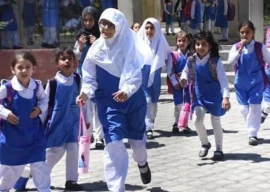
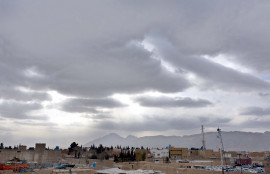




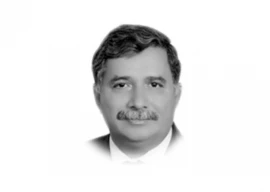
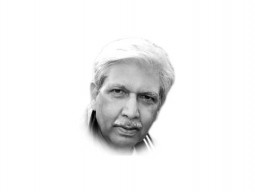

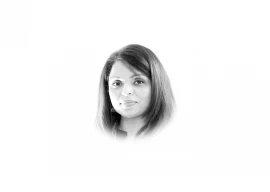

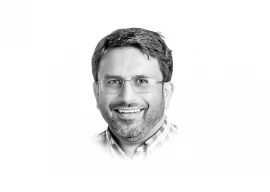
COMMENTS
Comments are moderated and generally will be posted if they are on-topic and not abusive.
For more information, please see our Comments FAQ